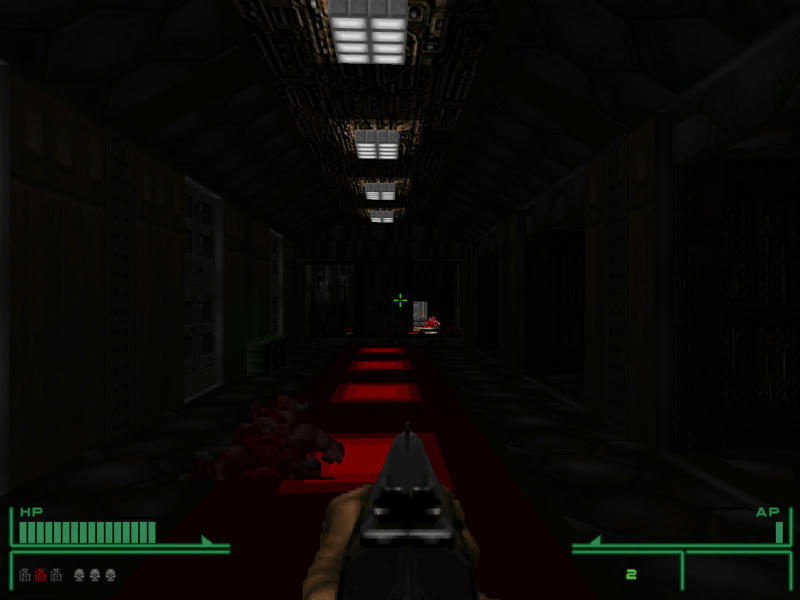
This can be combined with an alpha value. The message is rendered with additive blending. The following can be used in conjunction with the other types and flags by using the pipe character "|". The message then stays for the duration of its holdTime, then fades out using the duration specified in outTime. , fixed inTime, fixed outTime) inTime is the time, in seconds, that the message takes to fade in. After every character has been "typed," the message waits for holdtime seconds and then fades out for fadetime seconds. , fixed typetime, fixed fadetime) Typetime is the time, in seconds, that it takes each character of the message to appear on the screen. , fixed fadetime) Fadetime is the time, in seconds, that the message takes to fade out after its holdtime is up. Note that you cannot specify an infinite (0) HoldTime when using any of these message types:
#Gzdoom hud mods
This is to preserve compatibility with mods predating the addition of the alpha feature but which mistakenly specified additional, then unused, parameters. Note that to effectively use an alpha value, you need to explicitly add the HUDMSG_ALPHA flag. Additionally, additive blending is possible by combining one of the four message types using the pipe character "|" with HUDMSG_ADDBLEND. This is a fixed point value ranging from 0 (totally invisible) to 1.0 (totally opaque), defaulting to 1.0 if omitted. Optionally, an alpha value can be specified for the message. To get the shortest time possible for the message to stay on the screen (1 tic), use the formula 1.0 / 35 + 1 (or simply 1873 as an integer). If using HUDMSG_PLAIN, a HoldTime of 0 will cause the message to stay forever, or until the same ID is re-used. Use a floating point number with a decimal to obey actual seconds. How many seconds the message stays on screen in fixed point.
#Gzdoom hud how to
Please see the Coordinate Behavior section for instructions on how to position text messages and images after the hud size has been set. Note: The coordinate meanings are changed completely after using the SetHudSize function. : Position between left and right edge valid box locations : Same as, but center each line inside box : Position between top and bottom of valid box locations [-1.0, 0.0): Position between top and bottom edge of screen The difference between positive and negative values for these parameters is that positive values position the box the message is in on the screen, and negative values position the left/top edge of the box the message is in. You can think of each message being inside a box. The position of the hudmessage to be rendered on the screen in fixed point coordinates. Hudmessage(s:"test" HUDMSG_PLAIN | HUDMSG_COLORSTRING, 0, "NeonRainbowSmoothie", 0.5, 0.5, 1.0) For example, if you define a color called 'NeonRainbowSmoothie', you could use it like this: You can also specify the color as a string (including custom colors defined in the text colors lump) if you do so you must also add HUDMSG_COLORSTRING to the type with a binary OR ( '|' ). To use the font graphics' original colors,.There are a number of predefined colors, listed below. Negative Ids (-1, -2, -3, etc) will work as well.

Messages with lower ids will overlap those with higher ids. This is usually used to remove hudmessages manually or "move" them around (using a script). If a message with a non-zero id is displayed, then another with that same id is displayed, the first message will be removed before displaying the second. Additionally you can use use various flags, listed below. Messages types other than HUDMSG_PLAIN also take additional parameters, listed below. Currently, there are 4 different ways to display a message: HUDMSG_PLAIN, HUDMSG_FADEOUT, HUDMSG_TYPEON and HUDMSG_FADEINOUT. You can also use HudMessage together with SetFont to print images instead of text. A semicolon separates it from the rest of the function's parameters, because a print specification can build a big string from littler comma-separated parts. The 'text' parameter is in the Print specification, as used with Print or PrintBold. Hudmessage works like Print, except it offers more flexibility.


 0 kommentar(er)
0 kommentar(er)
